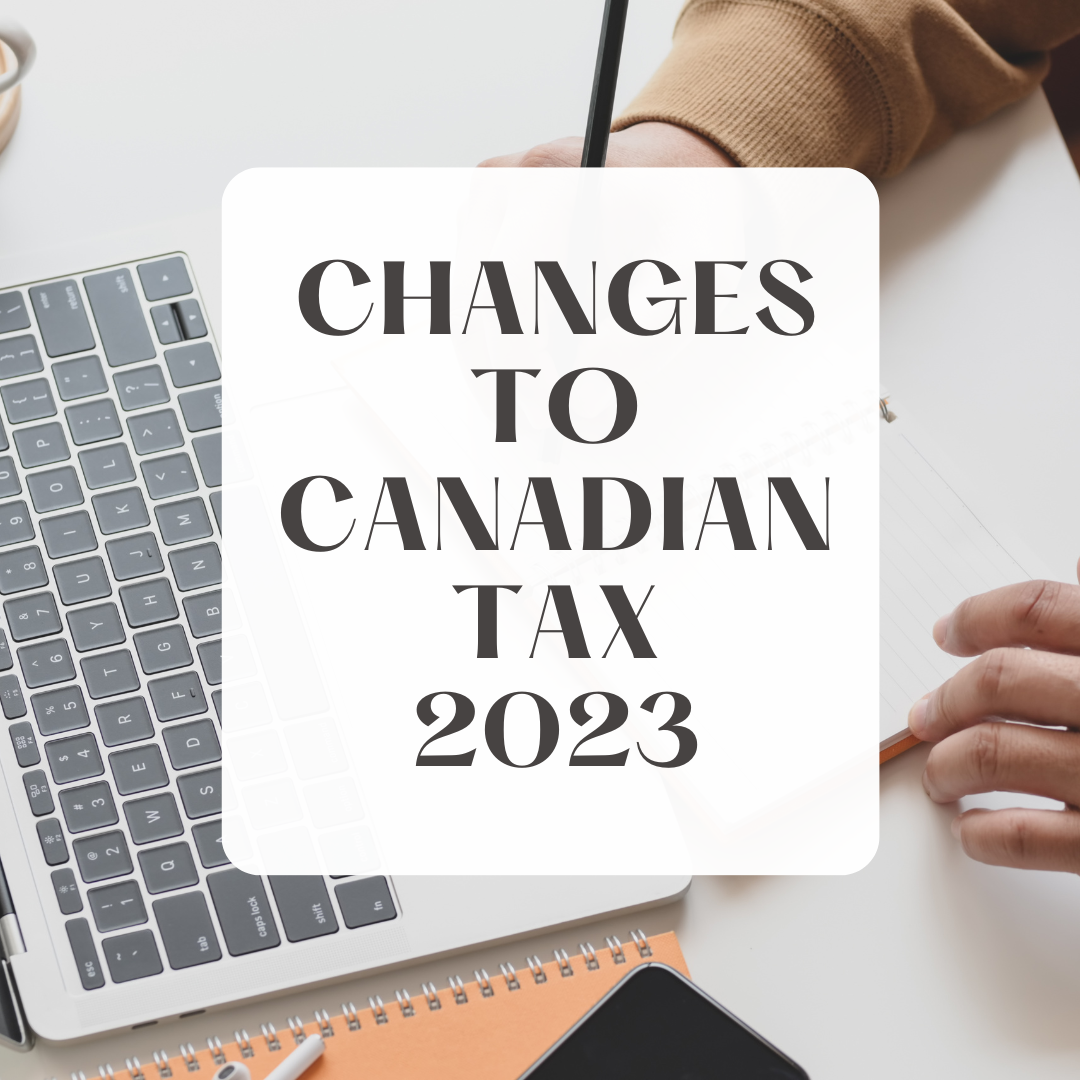
- January 2, 2023
- ProTime Bookkeeping and Taxation
- 0
Changes to Canadian Tax 2023
There are many substantial increases in the tax numbers that will take effect from Jan 1, 2023.
Below are some of the essential tax updates for 2023 that will impact every Canadian taxpayer:
Federal Tax Brackets updates for 2023
To help Canadian keep up with Inflation, which has been at historic highs for over a year, the federal government has adjusted Tax
brackets for the 2022 tax year using the 6.3 per-cent rate. Each bracket saw a slight increase from 2022 thresholds, which may mean paying a lower rate on
more of your income. The new brackets and tax rates are:
- Up to $53,359 of income is taxed at 15%.
- Income between $53,359 and $106,717 is taxed at 20.5%.
- Income between $106,717 and $165,430 is taxed at 26%.
- Income between $165,430 and $235,675 is taxed at 29%.
- Above $235,675 income is taxed at 33%.
Each province also has its own set of provincial tax brackets, most of which have also been indexed to inflation, but using their
respective provincial indexation factors.
Basic personal amount (BPA):
The Basic Personal Amount, or BPA, is a non-refundable tax credit that can be claimed by anyone who files income taxes in Canada. The goal
of the BPA is to give individuals making less than a certain amount a full deduction from income tax. Taxpayers who make more than this basic amount
receive a partial reduction.
The government in December 2019 announced an increase in the BPA annually until it reaches $15,000 in 2023, after which it will be indexed
to inflation. As a result, the increased BPA for 2023 has been set by legislation at $15,000, meaning an individual can earn up to this amount in
2023, before paying any federal income tax.
CPP (QPP) contributions:
Rules governing the Canada Pension Plan are changing in 2023. The new calculations are based on a CPP legislated formula that is based on the average growth rate of salaries and weekly wages earned throughout Canada.
The Canada Pension Plan contribution rate for 2023 is 5.95% up from 5.70% in 2022. The new maximum pensionable earnings under the CPP will be $66,600 in 2023 up from $64900 in 2022 with maximum contributions by employees and employers set at $3,754.45. Basic exemption limit stays at $3500.
For self-employed individuals who must contribute twice the amount, the contribution rate will be 11.90% in 2023 (up from 11.40% in 2022) for a maximum contribution of $7,508.90.
Tax-free savings account (TFSA) limit:
The 2023 TFSA contribution limit will increase for the first time since 2019 to $6,500 (from $6,000). The cumulative TFSA limit is now $88,000 for someone who has never contributed to a TFSA, and has been a resident of Canada and at least 18 years of age since 2009.
RRSP dollar limit:
The annual dollar limit for registered retirement savings plans, or RRSPs, is $30,780 for the 2023 tax year, up from $29,210 in 2022. However, keep in mind that your individual contribution limit is still capped at 18% of your entire earned income, which includes (self)employment and rental income, less any pension adjustments, up to the current annual dollar limit.
Old Age Security (OAS):
Old Age Security, or OAS, is a government program that has been created to provide retired Canadians with a source of income to help throughout their retirement. However, seniors who make too much income are sometimes asked to pay back some of their OAS.
If you receive OAS, the repayment threshold for 2023 is set at $86,912, meaning your OAS will be reduced in 2023 if your taxable income is above this amount.
Multi generational Home Renovation Tax Credit:
Starting Jan 1, 2023, CRA Introduce a new refundable Tax Credit which is equal to 15 per cent of eligible expenses (up to $50,000) incurred for a qualifying renovation that creates a secondary dwelling to permit an eligible person (such as a senior or a person with a disability) to live with a relative.
